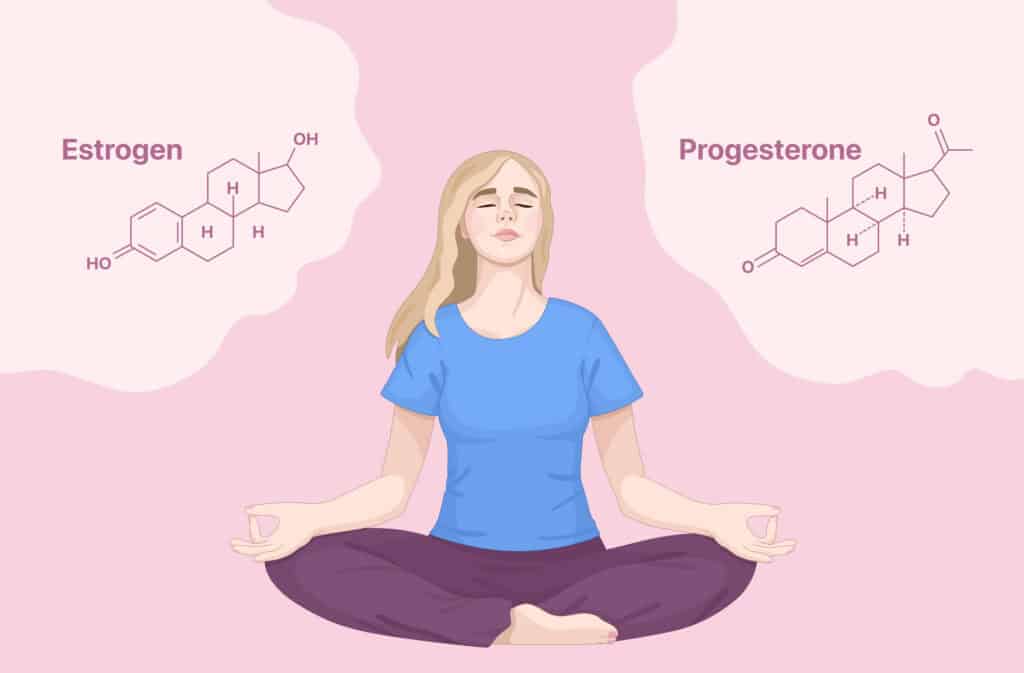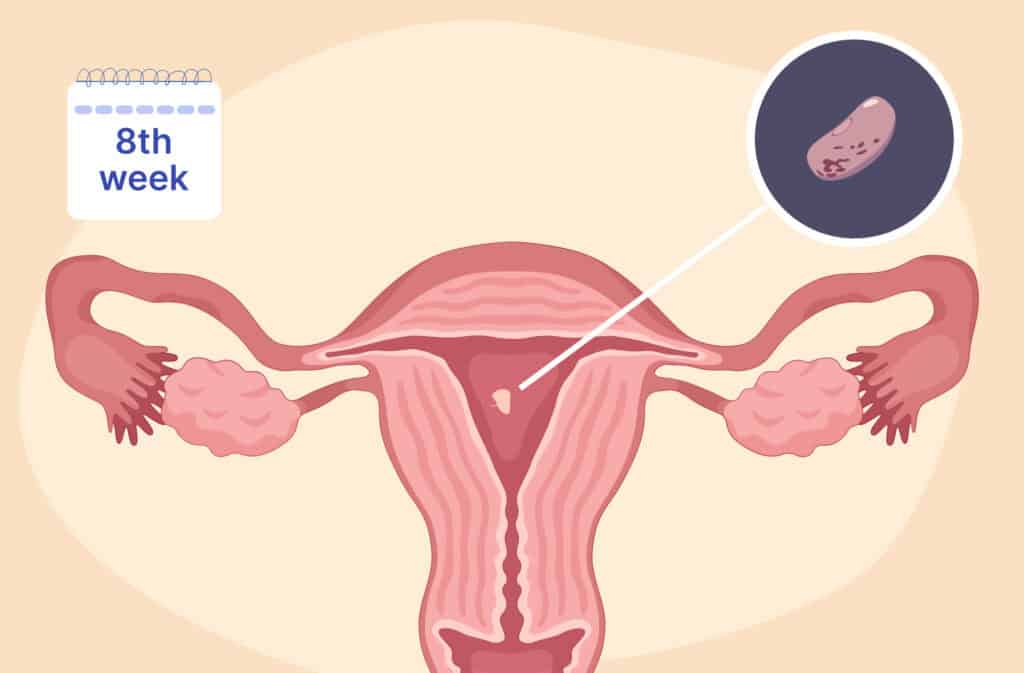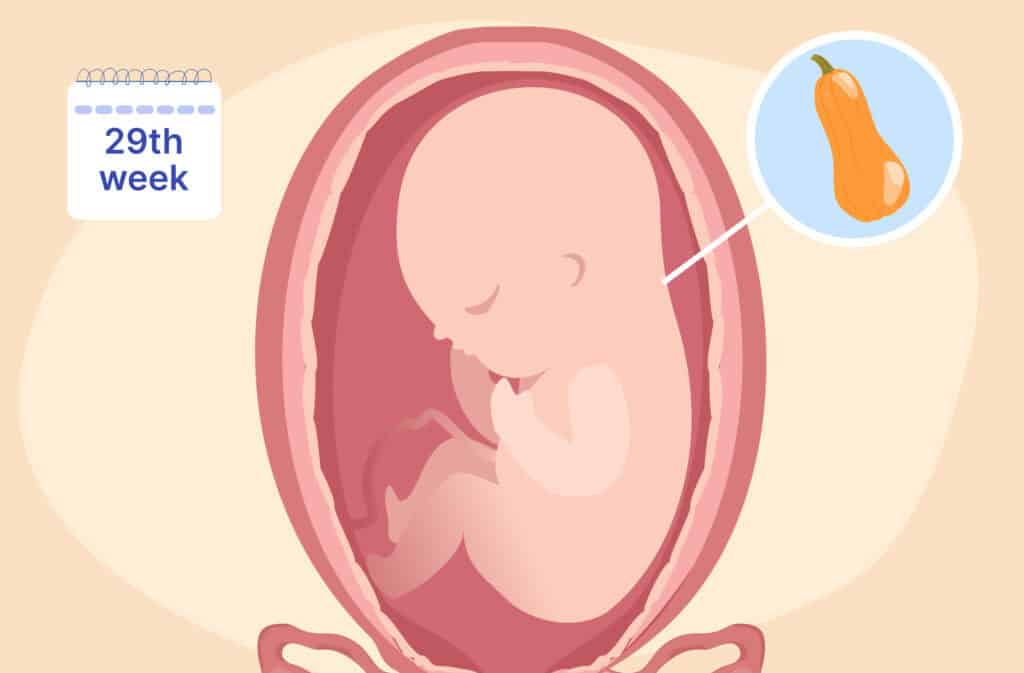Femia > Health Library > Your cycle > Health > Estrogen and progesterone: Functions, differences, and why they matter
Estrogen and progesterone: Functions, differences, and why they matter

- Updated Feb 11, 2025
- Published
CRAFTED BY HUMAN
Crafted by human At Femia, we provide accurate and up-to-date information at every stage of your journey, from trying to conceive, pregnancy and postnatal support. All content is created by a real person based on in-depth research and own professional experience. Femia ensures that you will receive expert advice, strict accuracy and a personalized approach from our authors/medical experts. Learn more about our editorial policy.
FACT CHECKED
Fact checked At Femia Health, we maintain the highest standards of editorial excellence in delivering content focused on helping you conceive, guiding you through pregnancy, and supporting you postpartum. Explore our content review principles to learn how we ensure the accuracy and quality of our health and lifestyle tips for every stage of your journey.
- Estrogen and progesterone are essential hormones in the female reproductive system. Estrogen is responsible for developing and maintaining female secondary sexual characteristics and the menstrual cycle. Progesterone, in contrast, is needed for preparing and maintaining the uterus for pregnancy.
- The key difference between progesterone and estrogen lies in their functions: estrogen stimulates growth and development, while progesterone supports stability and readiness for pregnancy. Together, they maintain balance in the reproductive system and overall female health.
Hormones regulate almost every function in your body. While insulin helps store glucose molecules after food, estrogen, and progesterone hormones play a key role in the development of sexual characteristics and reproductive functions. Although often called female hormones, both estrogen and progesterone are present in small levels in males, too.
In women, these hormones also affect the monthly menstrual cycle. Imbalance may cause underdevelopment in females, infertility, irregular periods, as well as uterine disorders. What is estrogen and progesterone? We created this article to help you learn about the importance of the two hormones and to compare the differences between them.
Try Femia’s plan that helps remove your blocks to get pregnant
What are estrogen and progesterone?
Progesterone and estrogen, as hormones responsible for various female characteristics in the body, are produced in the ovaries – two small, oval-shaped organs in the lower area between the hips and the endocrine glands located throughout the body.
As steroid hormones, they carry physiological messages to body systems and organs. These messages differ for each organ and system.
For example, estrogen sends messages to the uterus to grow and replace the lining for menstruation. Progesterone signals the body to thicken the lining of the uterus so it more easily accepts a fertilized egg. When fertilized, the body will continue producing progesterone throughout the entire pregnancy to support the developing fetus.
In addition, there are three naturally occurring estrogens in women. These include:
- Estrone (E1): this hormone is predominantly secreted during menopause.
- Estradiol (E2): this hormone is the predominant estrogen during the reproductive years, in terms of estrogen activity and absolute serum levels.
- Estriol (E3): is the predominant form of estrogen during pregnancy. This hormone is the most plentiful of the three estrogens, but it is also the weakest.
Aside from reproductive function, estrogen is also vital for all human bodies as it ensures proper bone growth and health, improves brain function, assists in cardiovascular health, and takes part in regulating mood. Progesterone also has several important roles in the female body, including mood improvement, thyroid function, and lactation support.
👉Find out more: Fertility hormones: Essential female reproductive hormones and how to balance them for conception
Which organ or organs produce estrogen and progesterone?
The ovaries are the primary source of sex hormones in female adults, including estrogen and progesterone. There are also secondary sources of sex hormones. For example, fat releases estrone, while adrenal glands produce progesterone, estradiol, and estriol.
This group of hormones is responsible for developing the female sexual characteristics. While being normally produced by ovaries in large amounts, estrogen and progesterone will also be produced by the placenta during pregnancy as it helps maintain a healthy pregnancy.
Function of estrogen and progesterone: What do they do?
Estrogen and progesterone are crucial hormones for reproductive health. They work together to regulate the menstrual cycle, support pregnancy, and support overall reproductive health.
Now, let’s break down the functions of these hormones in detail. Estrogen helps in the following ways:
- Development of secondary sexual characteristics: this hormone is responsible for the physical changes occurring during puberty. For example, breast development, the growth of underarm and pubic hair, and hips widening.
- Regulation of the menstrual cycle: estrogen stimulates the growth of the uterine lining (called the endometrium) during the first half of the menstrual cycle, preparing it for the potential implantation of a fertilized egg.
- Maintaining bone health: Estrogen also helps preserve bone density by inhibiting bone resorption (breakdown) and reducing the risk of osteoporosis, which is common after menopause.
Progesterone helps in the following aspects:
- Preparing the uterus for pregnancy: progesterone thickens the uterine lining after ovulation, creating an optimal environment for a fertilized egg to implant.
- Supporting early pregnancy: in case of pregnancy, progesterone levels remain high to help maintain the uterine lining and prevent uterine contractions that might disrupt implantation or early pregnancy.
- Regulating the menstrual cycle: this hormone also works in the latter half of the menstrual cycle (known as the luteal phase) to stabilize the endometrium. If pregnancy does not occur, progesterone levels decrease, which triggers menstruation.
Estrogen vs progesterone: What's the difference?
Although both hormones play a vital role in reproductive health, progesterone vs estrogen have differences in how they help with these and other bodily functions:
Production and regulation:
| Difference | Estrogen | Progesterone |
|---|---|---|
| Production and regulation | Produced mainly by the ovaries, specifically in the follicular cells, and regulated by the hypothalamus and pituitary gland through the release of follicle-stimulating hormone (FSH). Its production is highest during the follicular phase of the menstrual cycle. | Secreted primarily by the corpus luteum after ovulation and regulated by luteinizing hormone (LH). During pregnancy, the placenta takes over its production. |
| Roles in different phases of the menstrual cycle | Dominates the follicular phase, assisting the ovarian follicles' growth and the uterine lining's thickening. | Peaks during the luteal phase, stabilizing the endometrium for potential implantation. Its decline at the end of the cycle triggers menstruation if pregnancy does not occur. |
Effects on pregnancy and other body systems
Both hormones have important roles in maintaining conception and pregnancy but the difference between estrogen and progesterone lies in how they help with all these functions. Estrogen stimulates the growth of the uterine lining and increases blood flow to support pregnancy.
It also improves the development of the mammary glands to prepare the body for breastfeeding. Aside from reproductive function, estrogen maintains cardiovascular health and supports skin elasticity.
Progesterone helps maintain a healthy pregnancy by preventing premature uterine contractions and modulating the immune response so your body doesn’t reject the embryo. It also prepares the breasts for milk production as it stimulates glandular tissue development.
Side effects of estrogen and progesterone imbalances or therapies
Since estrogen and progesterone are important players in maintaining hormonal balance and overall health, imbalances of these hormones can have both short- and long-term effects, affecting physical and emotional well-being.
Here are some low estrogen and progesterone symptoms:
- Bloating
- Mood swings
- Breast tenderness
- How flashes
- Dry skin
- Trouble concentrating
There are also some risks of long-term imbalances:
- Low estrogen: Since estrogen is crucial for maintaining bone density, insufficient levels can accelerate bone loss and increase the risk of fractures. In addition, such an imbalance may elevate the risk of heart disease due to its role in regulating cholesterol.
- Low progesterone: An imbalance of this hormone causes an irregular menstrual cycle, and progesterone deficiency can also cause difficulties with ovulation and conception. Chronic low progesterone levels may lead to excessive thickening of the uterine lining, increasing the risk of endometriosis or cancer.
👉Find out more: How to balance your hormones in a week: Natural strategies for quick results
Common conditions related to estrogen and progesterone
Common conditions related to estrogen and progesterone
Apart from side effects, significant changes and imbalances in these hormones are associated with several health conditions, including:
- Polycystic ovary syndrome (PCOS): this condition causes many small sacs of fluid to develop along the outer edge of the ovary called cysts. These small cysts contain immature eggs (follicles) that fail to regularly release eggs for ovulation. This condition makes it harder to conceive and has symptoms like PCOS belly (abdominal fat), excessive hair, and irregular periods. For those with PCOS, the chances of getting pregnant are higher in one’s 20s as the disease progresses with age.
- Endometriosis: this condition causes tissue similar to the uterine lining (endometrium) to grow outside the uterus, often coming with symptoms like severe pain, heavy periods, and infertility.
- Hormonal replacement therapy (HRT) for menopause: this therapy is often used to reduce symptoms of menopause, a natural decline in estrogen and progesterone levels that occurs as ovarian function decreases.
Try Femia’s plan that helps remove your blocks to get pregnant
Questions from the Femia community
Can low progesterone cause miscarriages?
Yes, low progesterone levels may affect the uterine lining’s ability to support a healthy pregnancy.
Is it safe to take estrogen and progesterone supplements?
Consuming supplements without consulting a healthcare provider isn’t recommended. It’s better to seek a doctor’s advice when it comes to taking supplements, as they can provide informed advice to you based on your specific case, symptoms, analysis results, and existing health conditions. You can also try increasing estrogen and progesterone naturally before taking supplements.
Can men have estrogen and progesterone in their bodies?
Yes, men produce small amounts of these hormones, as they play roles in bone health and sperm production.
Can birth control pills affect my estrogen and progesterone levels?
Yes, birth control pills regulate these hormones to prevent ovulation and control menstrual cycles.
The bottom line
Estrogen and progesterone play distinct yet complementary roles in supporting female reproductive health. Estrogen promotes growth and development, while progesterone ensures stability and prepares the body for pregnancy. Their harmony is vital for a well-functioning reproductive system and broader health.
However, hormonal imbalances can lead to symptoms like irregular periods, mood swings, or fatigue and may contribute to conditions such as polycystic ovary syndrome (PCOS) or menopause-related issues. The good news is that many of these imbalances are treatable with professional medical guidance.
If you experience symptoms of hormonal imbalance or have questions about hormone therapies, consult a healthcare provider for personalized advice and solutions.
References
- Cleveland Clinic. “Estrogen: Hormone, Function, Levels & Imbalances.” Cleveland Clinic, Cleveland Clinic, 2 Aug. 2022, my.clevelandclinic.org/health/body/22353-estrogen.
- “Progesterone: Natural Function, Levels & Side Effects.” Cleveland Clinic, 29 Dec. 2022, my.clevelandclinic.org/health/body/24562-progesterone.
- Cleveland Clinic. “Ovaries: Anatomy, Function, Hormones & Conditions.” Cleveland Clinic, 13 May 2022, my.clevelandclinic.org/health/body/22999-ovaries.
- Cleveland Clinic. “Endocrine System: What Is It, Functions & Organs.” Cleveland Clinic, Cleveland Clinic, 22 Nov. 2023, my.clevelandclinic.org/health/body/21201-endocrine-system.
- “Maternity | Hormones during Pregnancy | Beaumont Health.” Www.beaumont.org, www.beaumont.org/conditions/pregnancy-hormones.
- “Protein Helps Pregnancy Proceed.” National Institutes of Health (NIH), 22 May 2015, www.nih.gov/news-events/nih-research-matters/protein-helps-pregnancy-proceed.
- Khosla, Sundeep, et al. “Estrogen and the Skeleton.” Trends in Endocrinology & Metabolism, vol. 23, no. 11, Nov. 2012, pp. 576–581, www.ncbi.nlm.nih.gov/pmc/articles/PMC3424385/, https://doi.org/10.1016/j.tem.2012.03.008.
- “Progesterone: Natural Function, Levels & Side Effects.” Cleveland Clinic, 29 Dec. 2022, my.clevelandclinic.org/health/body/24562-progesterone.
- “Progesterone: Natural Function, Levels & Side Effects.” Cleveland Clinic, 29 Dec. 2022, my.clevelandclinic.org/health/body/24562-progesterone.
- Cleveland Clinic. “Follicle-Stimulating Hormone (FSH): What It Is & Function.” Cleveland Clinic, 23 Jan. 2023, my.clevelandclinic.org/health/articles/24638-follicle-stimulating-hormone-fsh.
- Cleveland Clinic. “Luteinizing Hormone: Levels, Function & Testing.” Cleveland Clinic, 1 Aug. 2022, my.clevelandclinic.org/health/body/22255-luteinizing-hormone.
- Cleveland Clinic. “Low Estrogen: Causes, Symptoms, Diagnosis & Treatment.” Cleveland Clinic, 8 Feb. 2022, my.clevelandclinic.org/health/diseases/22354-low-estrogen.
- Mayo Clinic. “Polycystic Ovary Syndrome (PCOS) – Symptoms and Causes.” Mayo Clinic, 8 Sept. 2022, www.mayoclinic.org/diseases-conditions/pcos/symptoms-causes/syc-20353439.
- World Health Organization. “Endometriosis.” World Health Organization, World Health Organization, 24 Mar. 2023, www.who.int/news-room/fact-sheets/detail/endometriosis.
- Cleveland Clinic. “Hormone Therapy for Menopause: Types, Benefits & Risks.” Cleveland Clinic, 28 June 2021, my.clevelandclinic.org/health/treatments/15245-hormone-therapy-for-menopause-symptoms.

Discover what’s happening at 8 weeks pregnant, from baby’s first movements to new symptoms. Get tips for a healthy pregnancy and self-care ideas.

Learn when ovulation returns after a miscarriage, how to track fertility, and tips to conceive faster, Understand key factors affecting recovery and cycle regularity.

Discover what happens at 29 weeks pregnant, from baby development and symptoms to contraction tips and self-care advice.

